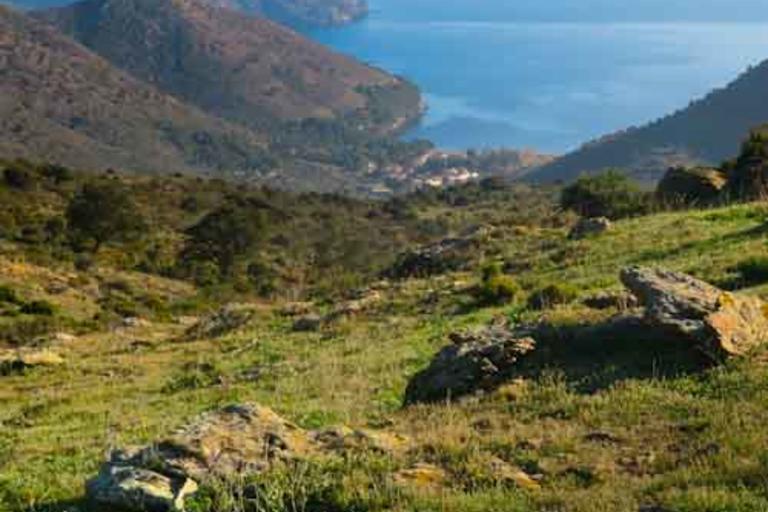
Introduction
(4700-3400 BCE - Middle Neolithic)
Neolithic tomb from the initial stage of the megalithic period in the Empordà region. Originally it was made up of a short rectangular chamber, oriented along a north-east axis, encased within an outcrop of slate that rises from the plane. Only one side of the slate slabs that surrounded the chamber is preserved of the structure. A large slab, which has disappeared, and the large mound that surrounded the cist enclosed this burial plot.
This cist is part of what has been called the necropolis of Montjoi, an early burial area that occupied the mountain passes within a radius of 1.5 km. The population probably inhabited the fertile valleys in the surrounding areas and the tombs are logically placed at the limits of the communal territory, unsuitable for agricultural use.
Climb the hill in order to enjoy the views to the north.
These meadows were used until 1960 for the grazing of the many sheep and goats. Formerly there were many pens and shelters or huts for the shepherds, of which only the ruins now remain.